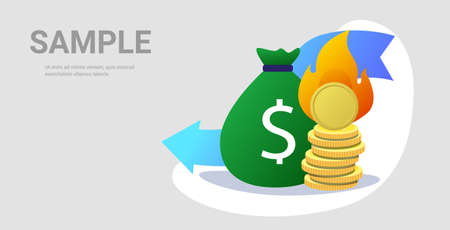Understanding the Basics of Investing
If you think investing is only for the wealthy, think again! With just $100 or even less, you can take your first step towards building wealth. In the U.S., investing is more accessible than ever thanks to user-friendly apps, commission-free trading, and financial education resources tailored for beginners. Let’s break down what you need to know before getting started.
What Is Investing?
Investing means putting your money into assets—like stocks, bonds, or mutual funds—with the goal of growing your wealth over time. Unlike saving (where you simply set aside cash in a bank), investing gives your money a chance to work for you through potential returns.
Why Does Investing Matter?
| Reason | Why It’s Important |
|---|---|
| Beat Inflation | Your savings lose value over time if they don’t grow faster than inflation. Investing helps protect and grow your purchasing power. |
| Build Wealth | Historically, investments like stocks have outperformed savings accounts and CDs, helping Americans reach their financial goals faster. |
| Financial Independence | Investing can help you prepare for milestones like buying a home, starting a business, or retiring comfortably. |
Common Investment Terms You Should Know
| Term | What It Means (Simple Explanation) |
|---|---|
| Stock | A share of ownership in a company. Stocks are bought and sold on stock markets like the NYSE or NASDAQ. |
| Bond | A loan you give to a company or government that pays you interest over time. |
| Mutual Fund/ETF | A collection of different stocks or bonds managed by professionals. ETFs often trade like stocks but hold many investments inside. |
| Diversification | Spreading your money across different types of investments to reduce risk. |
| Risk Tolerance | Your comfort level with ups and downs in your investment value. |
You Can Start Small—Even with $100!
Many Americans believe you need thousands to invest, but that’s no longer true. Thanks to fractional shares (buying part of a stock) and low minimums at online brokerages, your first $100 can make an impact. Here are some ways you can get started:
| Option | Description |
|---|---|
| Robo-Advisors (e.g., Betterment, Wealthfront) | Automated platforms that create a diversified portfolio for you based on your risk tolerance—even with small amounts. |
| No-Commission Brokerages (e.g., Robinhood, Fidelity) | You can buy stocks, ETFs, or fractional shares without paying trade fees. |
| Savings Apps (e.g., Acorns) | Round up spare change from purchases and invest automatically—perfect for getting started with pocket change! |
The Takeaway: Start Learning & Take Action!
You don’t need to be an expert or have deep pockets to begin investing in America. With basic knowledge and just $100 or less, you can start your journey towards financial growth and independence. In the next section, we’ll dive deeper into how to choose your first investment and make smart decisions with limited funds.
2. Setting Your Financial Goals
If you’re starting your investment journey with $100 or less, the first step is to get clear about your financial goals. Knowing what you want to achieve will help you make smart choices, whether you’re saving for a vacation, building an emergency fund, or planning for retirement. Let’s break down how to define your objectives, choose your timeline, and understand your risk tolerance.
Define Your Financial Objectives
Ask yourself: What do I want this money to do for me? Setting a specific goal makes it easier to stay motivated and track your progress. Here are some common goals:
| Goal Type | Example |
|---|---|
| Short-Term | Save for a new phone in 6 months |
| Medium-Term | Build an emergency fund over 1-3 years |
| Long-Term | Start a retirement fund for the future |
Choose Your Timeline
Your timeline is how long you plan to keep your money invested before needing it. The length of time affects the kind of investments that may be right for you. For example, if you need your cash soon (within a year), safer options like high-yield savings accounts or CDs may work best. If you have several years, you can consider stocks or ETFs, which can grow more but also fluctuate in value.
Sample Investment Timelines
| Timeline | Suggested Investment Types |
|---|---|
| Less than 1 year | Savings account, CD, money market fund |
| 1-5 years | Bonds, balanced mutual funds, conservative ETFs |
| 5+ years | Stocks, index funds, growth ETFs |
Assess Your Risk Tolerance
This means understanding how much risk you’re comfortable with when investing. Are you okay with seeing your balance go up and down in hopes of bigger gains? Or would sudden drops make you lose sleep at night? Here’s a quick way to think about it:
| Risk Level | Description |
|---|---|
| Low Risk | You prefer steady, smaller returns and want to protect your money. |
| Medium Risk | You can handle some ups and downs for better potential returns. |
| High Risk | You’re okay with big swings in value for a chance at higher rewards. |
Quick Tip:
Your risk tolerance isn’t set in stone—it can change as your life changes. Start small and adjust as you get more comfortable!

3. Top Investment Options for Beginners with Limited Funds
Getting started with investing in the U.S. doesnt require a ton of money. Even if you have just $100 or less, there are several great ways to put your money to work. Let’s break down some of the most accessible options for beginners:
Fractional Shares
Traditionally, buying stocks meant purchasing whole shares, which can be expensive—especially for popular companies like Apple or Amazon. With fractional shares, you can invest any amount of money and own a piece of a share, even if it’s just a few dollars’ worth. Many online brokers like Robinhood, Fidelity, and Charles Schwab offer this feature, making it easy to start small.
Key Benefits of Fractional Shares
- Buy into big-name companies with just a few bucks
- Diversify your portfolio without needing a large sum
- No need to save up hundreds or thousands to get started
Exchange-Traded Funds (ETFs)
ETFs are baskets of stocks or bonds that you can buy and sell like a single stock. They allow you to diversify your investment across many companies and industries—even with a small amount of money. Many ETFs have low minimums and low fees, making them perfect for new investors.
| ETF Type | What It Invests In | Why It’s Good for Beginners |
|---|---|---|
| S&P 500 ETFs | Top 500 U.S. companies | Diversification & stability |
| Total Market ETFs | The entire U.S. stock market | Broad exposure & low cost |
| Themed ETFs (Tech, Green Energy, etc.) | Certain sectors or trends | Focus on interests or beliefs |
Robo-Advisors
If you want a hands-off approach, robo-advisors are digital platforms that automatically invest your money based on your goals and risk level. Services like Betterment, Wealthfront, and SoFi let you get started with as little as $1-$10. They use algorithms to pick investments for you and handle all the rebalancing.
Advantages of Using Robo-Advisors
- No experience needed—they do the work for you
- Low starting minimums (often $0–$10)
- Diversified portfolios tailored to your needs
- Automatic reinvestment and tax optimization features available on many platforms
Other Accessible Options to Consider
- Savings Apps: Apps like Acorns round up your everyday purchases and invest the spare change.
- Bonds: U.S. Treasury bonds or bond funds are a stable way to start investing safely.
- High-Yield Savings Accounts: While not exactly investing, these accounts grow your money faster than traditional savings.
Quick Comparison Table: Where Can You Start Investing with $100 or Less?
| Investment Option | Minimum Required | User-Friendly? |
|---|---|---|
| Fractional Shares | $1–$5+ | Yes—most broker apps make it easy! |
| ETFs via Online Brokerages | $1–$50+ | Very beginner-friendly interfaces available |
| Robo-Advisors | $0–$10+ | No prior knowledge needed—just set goals! |
| Savings/Investing Apps (e.g., Acorns) | $5+ | Tied to daily spending; super simple setup! |
| Bonds/Bond Funds | $25–$100+ | A bit more traditional but still easy online |
No matter which route you choose, there are plenty of beginner-friendly ways to start investing in the U.S.—even if you only have $100 or less!
4. Opening Your First Investment Account
A Step-by-Step Guide to Getting Started
Once you’ve decided to start investing with $100 or less, the next big step is opening your very first investment account. Don’t worry—it’s easier than you might think! Here’s a simple guide to help you choose a trustworthy broker, set up your account, and understand the common fees in the U.S. market.
Step 1: Choosing a Reputable Broker
It’s important to select a broker that fits your needs, especially if you’re just getting started. In the U.S., there are many online brokers designed for beginners that let you start with little money and offer user-friendly platforms.
| Broker | Minimum Deposit | Commission Fees | User-Friendly App |
|---|---|---|---|
| Robinhood | $0 | $0/trade | Yes |
| Fidelity | $0 | $0/trade | Yes |
| E*TRADE | $0 | $0/trade | Yes |
| Charles Schwab | $0 | $0/trade | Yes |
Most popular brokers in the U.S. don’t require a minimum deposit and offer commission-free trades on stocks and ETFs.
Step 2: Setting Up Your Account
- Sign Up Online: Visit the broker’s website or download their app. You’ll need to provide basic info such as your name, address, Social Security number (for tax purposes), and employment details.
- Verify Your Identity: For security, most brokers will ask for a photo of your ID or other documents.
- Add Funds: Link your bank account to transfer money into your new investment account. Most brokers make this process quick and easy, and you can usually start with as little as $1.
- Select Your Investments: Once your account is funded, you can choose from stocks, ETFs, or even fractional shares so you can invest any amount—even if it’s just $5 or $10.
Step 3: Understanding Common U.S. Investment Fees
Brokers may advertise “no commissions,” but there are still some fees you should know about. Here’s a breakdown:
| Fee Type | Description |
|---|---|
| Commission Fee | The cost per trade (often $0 for stocks/ETFs at major brokers) |
| Account Maintenance Fee | A monthly or annual charge (rare at large online brokers) |
| Expense Ratio (for ETFs/Mutual Funds) | An annual fee charged by funds, usually under 1% |
| Transfer/Withdrawal Fee | A fee for moving money out of your account (varies by broker) |
| Inactivity Fee | A charge if you don’t trade for an extended period (uncommon now) |
Tip:
If you’re ever unsure about a fee, check your broker’s “fee schedule” online—it should be easy to find and clearly listed.
The Bottom Line on Opening Your First Account
You don’t need a lot of cash or experience to get started in investing. With just $100—or even less—you can open an account with a reputable broker and begin building your future wealth today. Just follow these steps, keep an eye on fees, and remember: every investor starts somewhere!
5. Smart Strategies for Growing Your Investments
Diversify Even with a Small Amount
When you’re starting out with $100 or less, it’s easy to think you don’t have enough to diversify. But thanks to modern investing tools, you can spread your money across different assets—even with a small budget. Many apps and platforms let you buy fractional shares of stocks or invest in ETFs (Exchange-Traded Funds), which hold dozens or even hundreds of companies. This way, you lower your risk if one investment doesn’t perform well.
Simple Ways to Diversify $100 or Less
| Investment Option | How It Helps Diversify | Typical Minimum Investment |
|---|---|---|
| Fractional Shares | Own pieces of multiple companies | $1+ |
| ETFs | Invest in a basket of stocks or bonds | $1–$10 |
| Micro-Investing Apps | Automatic diversification through portfolios | No minimums in some apps |
Stay Consistent with Regular Contributions
The best investors know that consistency is key. Even if you can only add $5 or $10 at a time, setting up automatic deposits helps you build your investment habit. Over time, these small amounts can grow thanks to compound interest and market gains. Try to treat investing like any other monthly bill—putting it on autopilot makes it easier to stick with your plan.
Example: Building Wealth Over Time
| Monthly Investment | Years Investing | Estimated Value (7% annual return) |
|---|---|---|
| $10 | 5 years | $700+ |
| $25 | 10 years | $4,200+ |
| $50 | 15 years | $16,500+ |
*Numbers above are estimates and actual returns may vary.
Avoid Common Beginner Mistakes
- Don’t chase trends: It’s tempting to buy “hot” stocks, but big gains often come with big risks.
- Avoid high fees: Look for no-fee or low-cost brokers and funds so more of your money stays invested.
- Stay patient: Markets go up and down, but long-term investors who stay the course usually do better.
- Don’t put all your eggs in one basket: Spread out your investments—even when starting small.
Grow Your Investments as Your Budget Increases
Your first $100 is just the beginning! As you earn more or find extra cash, keep adding to your investments. Consider exploring new types of accounts like Roth IRAs for retirement savings, or trying out real estate crowdfunding platforms as you get comfortable. The most important thing is to keep learning and growing along with your portfolio. Remember, every investor started somewhere—even the pros began with their first dollar!


